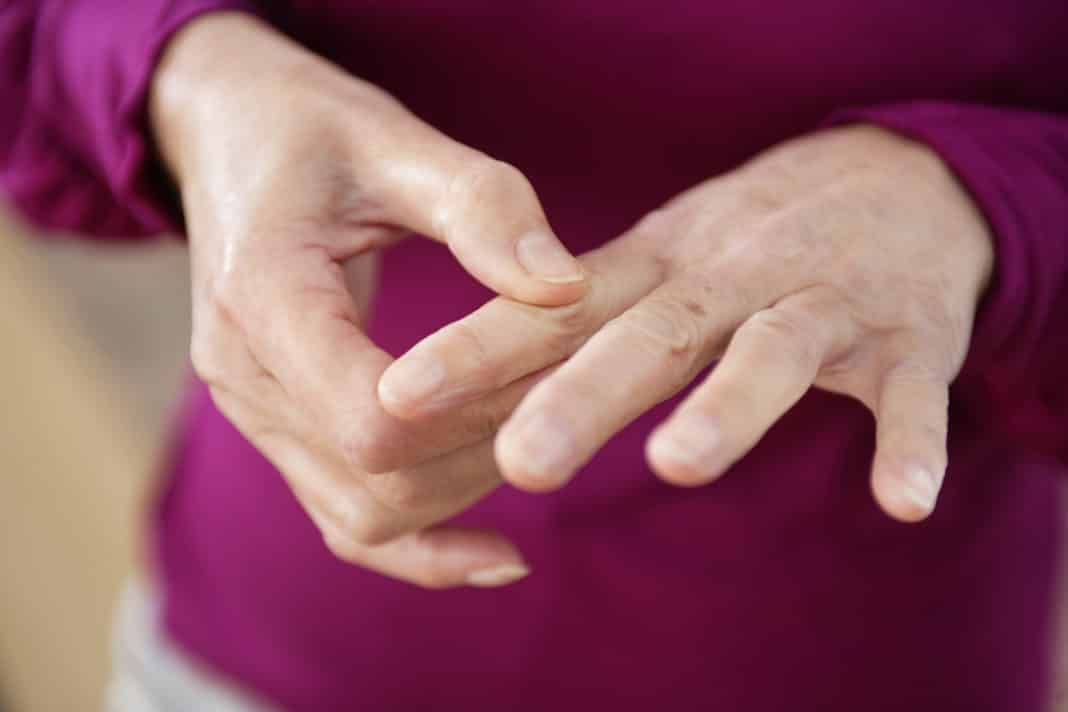Diabetes and arthritis are not directly related, but quite often they overlap each other. According to the latest research data, more than half of people with diabetes (52%) also suffer from arthritis. In addition, a person with high blood sugar may have certain musculoskeletal changes, after which joint pain, nodular swelling and swelling may appear under the skin, especially in the fingers, toes, and knees.
Type 1 diabetes and rheumatoid arthritis
In people with type 1 diabetes, the immune system actively attacks the pancreas and synovial fluid of the joints. It has also been observed that in patients with rheumatoid arthritis and diabetes, the levels of inflammatory markers are increased ( Interleukin 1 and C-reactive protein). Studies show that there is a genetic connection between these diseases. In recent years, scientists have identified the PTPN22 gene, which is equally matched with many autoimmune diseases, including diabetes and rheumatoid arthritis.
Type 2 diabetes and osteoarthritis
For both of these diseases, there are at least two of the most important risk factors — weight and age. And since both diabetes and osteoarthritis have common conditions for existence, quite often they occur together, synchronously. Joint disease is very closely related to a person’s age, because they all gradually wear out. After all, the older the person, the more he uses his joints and the greater the likelihood of osteoarthritis. The risk of becoming ill with type 2 diabetes also increases with age, and the majority of people diagnosed with the disease are over 55 years old. And the matter is that weak physical activity and weight gain.
As for obesity, it increases the tension in the joints, thereby affecting them. Each extra kilogram of pressure on his knees, and over time, this tension contributes to the rupture of the joint. The fullness also affects many internal organs. Adipose tissue produces such chemical compounds that are able to increase insulin resistance, thereby increasing the amount of glucose in the blood. Straining to fight chemicals and pump blood, blood vessels and the heart “wear out” over time. Of course, such two diseases as diabetes mellitus and arthritis do not cause each other, but sometimes they accompany each other, and obesity and low mobility contribute to their development.
Many signs of arthritis can be treated with various anti-inflammatory drugs and injections, but it is very important that a qualified specialist prescribed all the necessary drugs.
Preventing arthritis and improving well-being in diabetes
To improve the condition in diseases such as arthritis and diabetes, exercise will help – easy running, swimming, walking, cycling and so on. Such activity will help to normalize the level of sugar, and its absence increases the risk of limb amputation and susceptibility to infections. Many do not pay enough attention to physical education and lead a sedentary lifestyle. But research by many scientists shows that with such ailments physical activity is very important. When pain in the joints exercise is hard enough, but to achieve positive results, it is necessary to conduct classes systematically and increase the load gradually. It is possible, without getting up from bed in the morning, to do exercises for arms, shoulders, palms, etc. The main thing is to set yourself a definite goal – to defeat the illness – and move in the right direction.
Fruit juices cause diabetes
We are receiving more and more media reports that sugary soft drinks are damaging our bodies. Scottish scientists pay attention to the fact that fruit juices harm the health of not less sweet soda, because contain the same amount of simple sugars. In his article published in The Lancet Diabetes andEndocrinology, scientists from Glasgow recommend using no more than 150 milliliters of juice per day.
At the end of the last century, the World Health Organization (WHO) recommended to consume about 5 servings of plant food per day ( which is approximately 500 g) to maintain the body in a healthy state and prevent many chronic diseases. Allowed to replace one serving with a glass of vegetable or fruit juice. Currently, however, scientists advise to revise these recommendations and make changes: exclude fruit juices.
Let’s compare the energy value and carbohydrate content in two drinks: apple juice and coca-cola.
Apple juice (100 g) – 46 kcal, carbohydrates 10.1 g
Coca-Cola (100 g) – 42 kcal, carbohydrates 10.6 g
The conclusions are obvious: the caloric content and sugar content are about the same.
The authors of the study warn that it is wrong to consider juices as substitutes for fresh fruit. And indeed, we know that dietary fiber contained in fruits is absolutely necessary for nutrition. Fruit juices or completely devoid of pulp, or contain it in small quantities. The data of the study show that eating fruit has practically no effect on the risk of developing diabetes. While the immense consumption of juices leads to an increase in body weight, increased tissue resistance to insulin and, as a result, the likelihood of developing diabetes.
Vitamins and elements necessary for our body, contained in fruit juices, are certainly important. But metabolic disorders, which can be formed by excessive use of juices, outweigh the balance in a negative direction.
